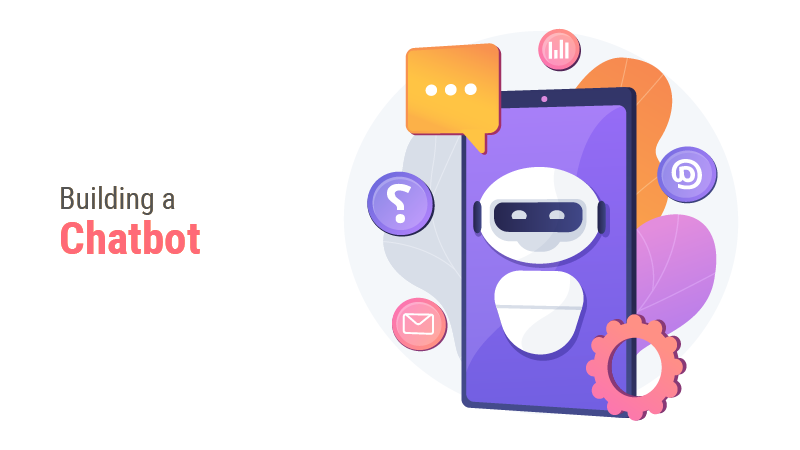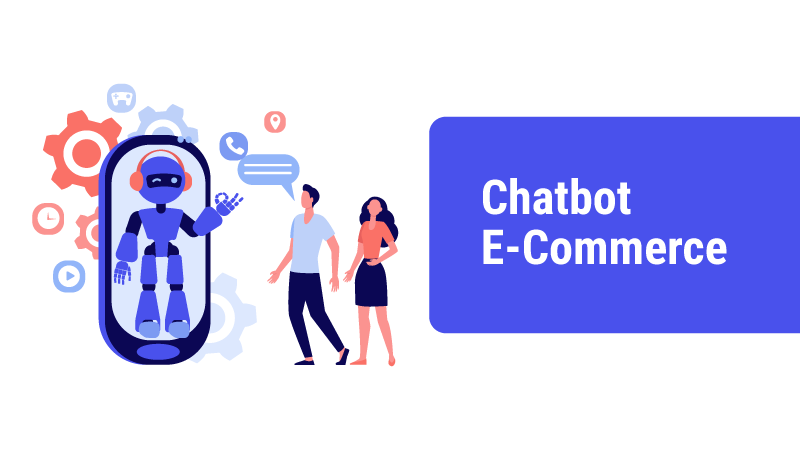How To Build A Chatbot: Introductory Guide

What is a chatbot?
A chatbot is a computer program that communicates with humans through different mediums such as text, voice, gesture, etc over the internet, just as any human being speaks in natural language and emotions. A powerful chatbot, supported by artificial intelligence domains like Natural Language Processing (NLP) facilitates natural communication between users and technology. Chatbots offer customer services through automated messages and guidance. The main benefit of using chatbots is that they provide improved customer satisfaction and increase business efficiency. The chatbots we find in Facebook and WhatsApp messengers, Telegram, virtual assistants like Alexa, Apple’s Siri – all fall under chatbots. Today, chatbots have been implemented in many relevant fields of education, hospital, travel and tourism, and all kinds of assisting services.
Things to consider before building a chatbot
Before you build a chatbot, you have to focus on certain factors that should be used in the building of chatbot.
Define the use and purpose of a chatbot
The purpose of building a chatbot should be defined – the issue the chatbot is going to address, the service it is going to offer to the users.
The type of chatbot
there are three types of chatbots – rule-based chatbot, AI-powered chatbot, and intelligently independent chatbot. You have to opt for the one which is suitable for your business purposes.
Choosing the platform
Selecting the platform for building the chatbot is based on your budget, time, and knowledge.
Selecting the framework
You have to determine the technology to build your chatbot which is purely based on professional experience and knowledge in programming. This decides the complexity of the chatbot.
Types of chatbots
There are mainly 3 different types of chatbots.
Rule-based chatbots
Rule-based chatbots are designed to give responses to the user systematically. They are programmed to use rules like IF conditions. The chatbots give paired responses to user input on the basis of such rules. This chatbot does not process any question, interaction, or situation outside the rules and the user will be provided with a common statement. Rule-based chatbots are the standard type of chatbots and are mostly used when the customer inputs are ideal, use cases are fewer, and are static.
Intelligently independent chatbots
These chatbots are embedded with a little amount of Artificial Intelligence (AI) and Machine Learning (ML) that enable users to engage in interactive conversations. These users have extensive rules that allow them to have personal conversations with the help of AI, which makes them far better than rule-based chatbots.
AI-powered chatbots
When it comes to the scale of chatbots, AI-powered chatbots stand at the dominant position based on their potential. The AI and ML features allow the chatbots to understand every interaction with the users and become proficient in human-like conversations. The naturality in their conversation makes it difficult for someone to tell if it is a bot or a human being at the next end of the conversation.
Chatbot platforms
Chatbot platforms are just a platform for developing chatbots. These platforms are the best place to start for beginners as it does not require any knowledge or skills in coding. The platform supports the drag-and-drop feature which makes it simple and easy to use. All you have to do is create an algorithm for the working of the chatbot. There are two types of chatbot platforms:
Development platforms
With development platforms, you can build a chatbot within minutes irrespective of the status of your coding knowledge, which means coding is not a barrier in creating chatbots. Here are some of the development platforms where you can design, build, examine, and implement chatbots:
- Botstar
- Manychat
- Chatfuel
- Bottr
- Motion.ai
Publishing platforms
This is the platform that enables the user to access and use the chatbot. These are the most commonly used chatbots, especially in companies and businesses. They are also used in customer-friendly applications. Some of the best examples of publishing platforms include:
- Slack
- Skype
- Messenger
- Telegram
Frameworks in building a chatbot
Chatbot Frameworks are a type of software development kit used by developers that enable building chatbots using natural language processing and natural language understanding (NLP and NLU) and many other advanced technologies. The framework provides basic blocks for the construction of bots by coding, such as purpose, context, entities, and dialogue design as per the requirements of the developers. Unlike platforms, frameworks do not have drag-and-drop features or algorithms, or templates of any kind. Some of the popular frameworks include:
- Amazon’s Lex.
- IBM Watson
- Chatterbot
- Google’s Dialogflow
Why build a chatbot?
Chatbots can function more quickly, efficiently, and accurately than human agents. Plus, they can easily raise the bar to control a flood of customer queries without taking a break. Here are some of the reasons why you need to build a chatbot:
24/7 functionality
Unlike human agents, chatbots do not need breaks or intervals. They are programmed to work 24/7 without any extra input or recess. They provide customer services irrespective of the time and region.
Live responses
Automated chatbots give instantaneous responses to customers without wasting time. They do not take time to consult other agents or superiors, they just deliver the solution at the moment and therefore, a great relief for impatient and busy customers.
Multi-lingual capability
Bots are fluent in more than 100+ languages. This makes it easy for the customers to find solutions to their problems without language being a barrier. No other human agent will be able to speak in more than 5 or 6 languages to the customers.
Integrate with other applications
As a software program, chatbots can be incorporated with various other applications that can enhance their usability. For instance, a chatbot can be combined with helpdesk software and payment integration to make it a good medium for business engagement.
Cost savings
For hiring and keeping a human agent, a company incurs a lot of costs. A chatbot is similar to a single-time implementation software. The cost of a chatbot is limited to one-time purchase and deployment costs. In addition, it does not require the compensation or benefits offered to human agents. Therefore, it is cost-effective and easy to use.
Wrap Up
Building a chatbot has become relevant for business owners and companies these days, especially with the advent of digitization and technological advancements. Over time, chatbots will become the driving force behind any business to grow, increase efficiency, enhance customer relationships, and minimize functional costs. It is quite easy to build and implement a chatbot when compared to hiring a human agent.
Get Started with our AI ServicesBlogs by Category
AppForms Artificial Intelligence Blockchain Call Centers Chatbots Cloud Computing Data Management Design Digital Marketing Digital Transformation Enterprise Applications FinTech Insights LowCode Development Microsoft Mobile Apps News Office 365 Robotic Process Automation Security SharePoint Software Development Web ApplicationHow Chatbot Benefits E-Commerce

2024-05-23 16:40:42